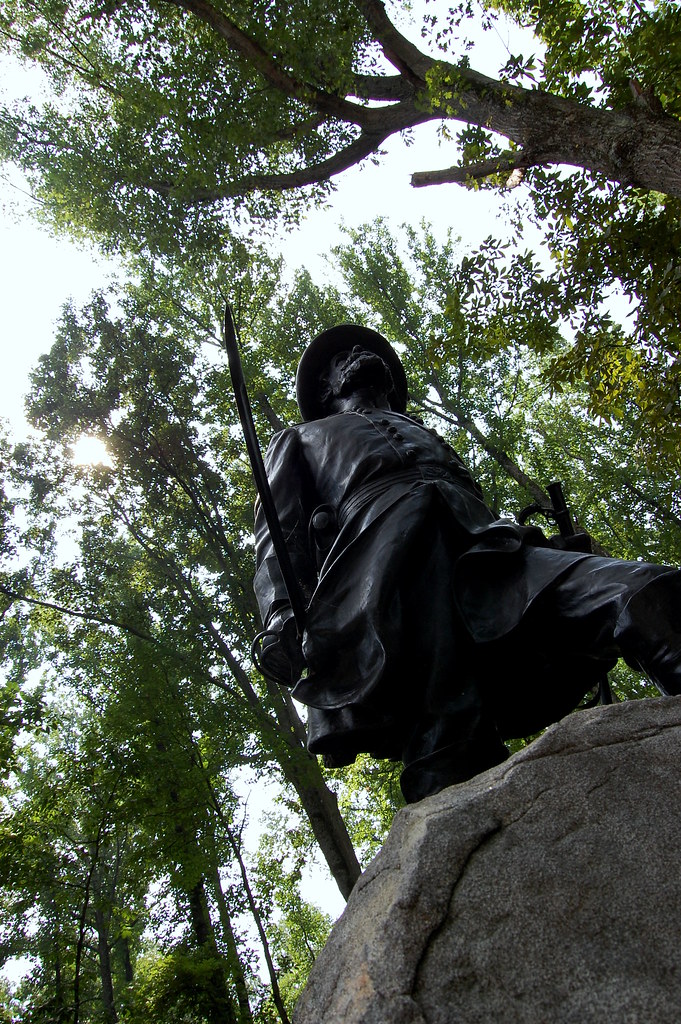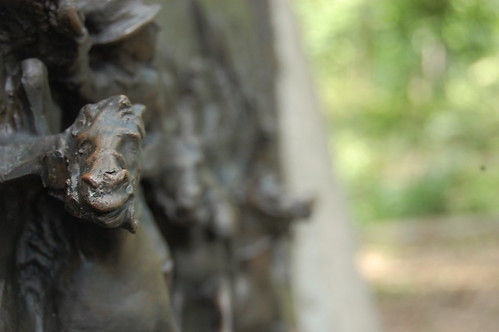Major William Wells
/Earlier this month, I travelled down to Gettysburg, Pennsylvania with two of our instructors, Dr. John Votaw and Dr. John Broom to prepare for an upcoming MMH program that we will be conducting a year from now. In the past couple of years, we've done two staff rides to Fredericksburg, to examine the Overland Campaign of the American Civil War.
A staff ride, briefly, is a sort of glorified fieldtrip that has been utilized by the armed forces for over a hundred years. Students travel to the battlefield, with a small amount of background preparation, and examine, from where events happened, how any given battle progressed, and look to the reasons for why battlefield commanders made the decisions that they do. The level of information that students can glean from this type of experiential learning - something, I might add, that was encouraged by Norwich University's founder, Alden Partridge - is immense, and I found that when I participated on one in Normandy, France, I gained a far better feel for just how and why the actions of the invasion happened the way that they did.
Travelling to Gettysburg will likely do all of this for those who participate. I myself learned much about the battlefield and the events that happened in July of 1863. For me, the Civil War was a major point in U.S. History, and I could tell you about the reasons behind the conflict, but very little about the actual battle, or its significance in the larger context of the war. Happily, this trip cured me of my ignorance, and brought about a couple of other surprises.
On Confederate Avenue, near Big Round Top, on our first day, we stopped at a statue of a man with a drawn sword - not a necessarily uncommon sight on a battlefield littered with memorials - memorializing the exploits of the First Regiment of the Vermont Cavalry. The man is Major William Wells, who participated in an ill-advised cavalry charge. After returning home, and looking over the pictures that I took, I began to look more into this one man.
The charge occurred on the 3rd of July, the last day of the battle, in the early evening. Wells was in command of the 2nd Battalion, and rode alongside General Farnsworth through the woods, where they made contact with the 4th Alabama Infantry and the 9th Georgia Infantry, and when they turned, ran into the 15th Alabama infantry. During the fighting that ensured, General Farnsworth was shot and killed, leaving Wells in charge of the battalion. He led his men to safety, and for his heroic actions, he was awarded the Medal of Honor. Wells would continue to serve in the Union army throughout the rest of the war. Later that month, he was wounded at Boonsboro, Maryland, and again in September at Culpeper Courthouse in Virginia. By 1864, he was in command of the First Vermont Cavalry, and participated in the Shenandoah Valley campaign, and would eventually take command of the brigade and 3rd Division, and stayed with the Army until 1866, when he returned back to Vermont. Over the course of the Civil War, he had managed a successful career within the military, beginning as a 2nd Lieutenant in 1861 when the FVC was raised, to the rank of Major by the time of the Gettysburg battle, and was commissioned as a Brigadier General in May of 1865, based on recommendations from General Sheridan and General Custer.
The story doesn't end there, however. Upon his return to Vermont, Wells forged a successful business career in the state, managing a pharmaceutical company until 1872, when he was appointed customs collector for the state of Vermont by President Grant, and would return to his company, Wells, Richardson & Co. in 1885, as well as becoming the president of several other companies, such as the Burlington Trust Company, Burlington Gas Light Company and the Board of Trade for the city. He also became the director of the Rutland Railroad and the Champlain Transportation Company.
From 1865, he served in the state legislature, representing his hometown of Waterbury, and in 1866, he was elected by that body to serve as Vermont's adjunct and inspector general for the next 13 years. As Adjunct General, on July 13th, 1871, Wells travelled to Northfield Vermont, where he inspected the Corps of Cadets at 3 pm for their commencement. While this is the only reference that I could find of Well's interactions with the University, I suspect, that given his position and military record, as well as his proximity to the school, that he would have visited on other occasions as well. In 1892, Wells passed away suddenly at the age of 54, and was eulogized by the Burlington Free Press as "one of [Burlington's] foremost citizens and the State of Vermont one its worthiest, best known and universally respected citizens."
In 1913, with money raised by the state of Vermont, a monument to the First Vermont Cavalry, with Wells at the top, located near where his unit operated during the battle. With veterans of the battle present, the statue was dedicated on July 3rd, with the dedication read by Horatio Nelson Jackson (the first man to cross the United States in a car, and Well's son-in-law), and various dignitaries spoke throughout the day. A year later, a sister statue of Wells was unveiled in Burlington, Vermont's Battery Park to similar fanfare.
This is a bit of a divergence from Gettysburg, but I was interested to find the connection to the State of Vermont, and to some extent, to Norwich University through this one, remarkable figure in Vermont history. While Norwich University certainly played its part in the battle (there is a book, called By The Blood Of Our Alumni: Norwich University Citizen Soldiers In The Army Of The Potomac, 1861-1865, by Robert Poirier, which deals extensively with that subject), it is the smaller stories that require a bit of digging that makes the connection all the more worthwhile. Undoubtably, Wells will be something to stop at a year from now, when we travel to the battlefields once again.
Sources: David F. Cross, A Tale of Two Statues: The William Wells Status at Gettysburg, Pennsylvania and Burlington, Vermont. Vermont History 73 (Winter Spring 2005), William A. Ellis, Norwich University, 1819-1911: Her History, Her Graduates, Her Roll Of Honor, V. 1., Google Books, accessed August 24, 2009, Page 170, William Wells Statue Inscription, Gettysburg, PA.


